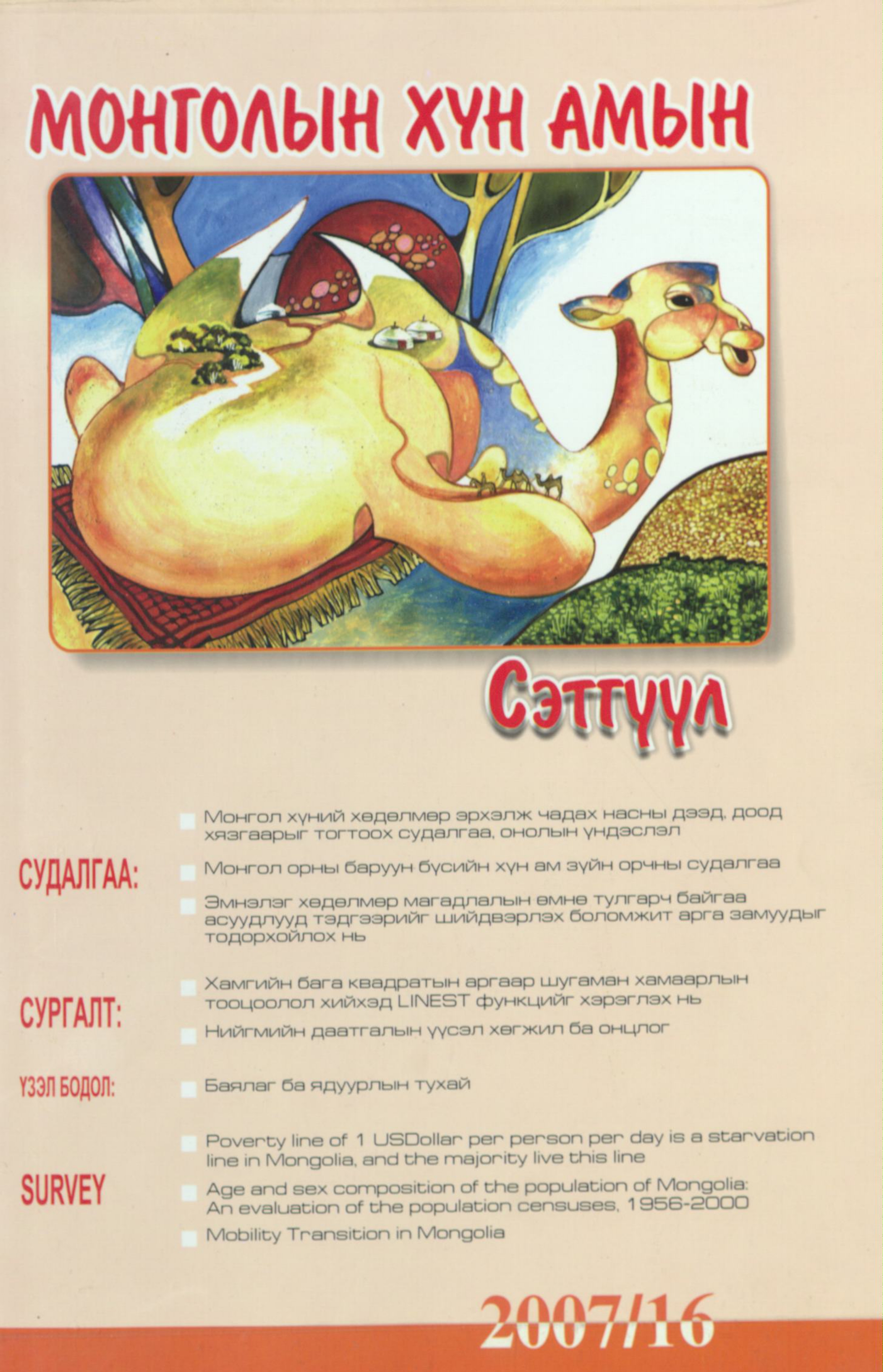Age and sex composition of the population of Mongolia. An evaluation of the population cencus, 1956-2020
Main Article Content
Abstract
This paper describes trends and patterns in age and sex composition of the population of Mongolia from 1956 to 2000. Over the last 50 years, the population of the country almost tripled from 845.5 to 2373.5 between 1956 and 2000. This biggest demographic increase in the history of Mongolia impacts evidently the age and sex structure of the country by adding numerous growing young age population. Based on indexes and methods designed to describe age and sex structure, to evaluate age and sex data from population censuses, we identify and distinguish data inconsistencies from natural effect of the recent demographic processes. Some patterns that might be identified as data discrepancies are indeed real.
The paper addresses first general age and sex structure through population pyramid, the most basic tool for demographers. This useful starting point allows to sketch broadly data quality Then, age data quality is first examined before turning to sex data quality. These two basic demographic attributes allow to detail more precisely the pattern sketched by the population pyramid's review.
Age data are analysed (1) by single years of age using Myers's blended method, and (2) by five-year age group data through an alternative measure of age data quality, the successive age ratio, and the conventional age-accuracy index. In assessing age data quality, it is shown that the classical measures of age quality can be biased in the case a population increases (generally due to mortality decline while fertility remains stable). Based on the assumption of linearity and rectangularity in the age distribution over age groups, these measures are unable to take into account the effect of a growing population.
In subsequent sections, the paper turns to sex ratio analysis, age-sex accuracy index, and pattern of under-enumeration. If sex ratio data by age groups are improving over the years, they still present doubtful pattern in 2000 (especially at age 50 and over). This is an issue that need to be tackled down. The age-sex accuracy index, developed by the United Nations in the 1950s, shows that Mongolia's census data can be considered as slightly inaccurate. But, since this index is also based on the assumption of linearity and rectangularity, it is also biased by Mongolia's demographic increase. Finally, the pattern of under-enumeration is addressed through intercensal cohort analysis. It shows that since the 1969 census pattern of under- enumeration are consistent with observations from other developing and developed countries. Some possible reasons to these pattern are briefly introduced.
To conclude, the main points are summed. The conclusion stresses that, taking into account Mongolia's past demographic increase, recent census age and sex data can be considered as accurate.
